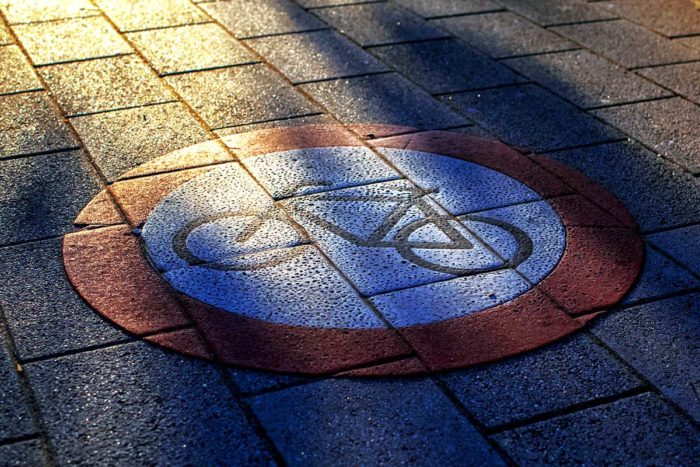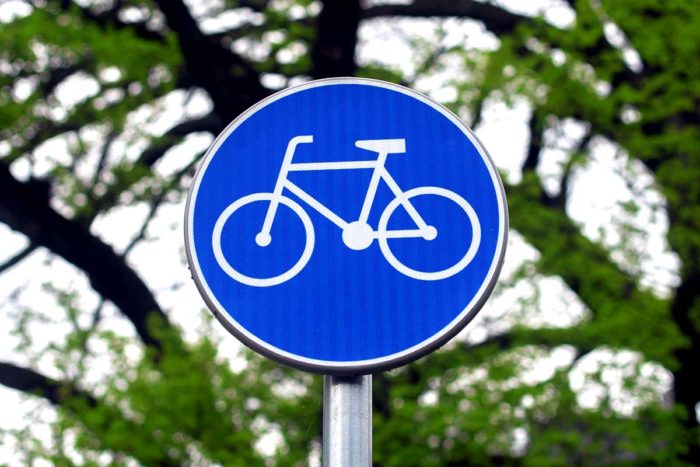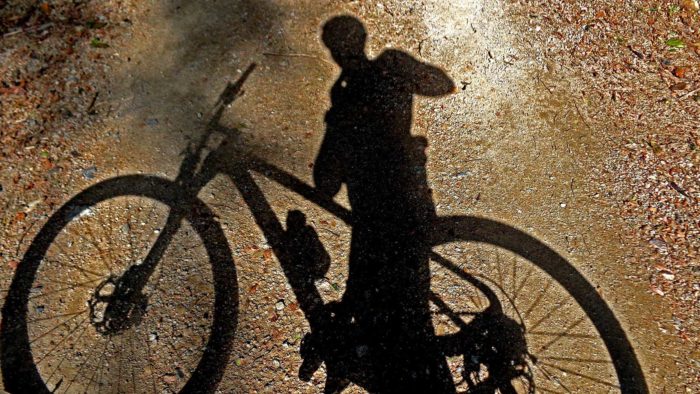Riding on pavements, scattering pedestrians in their wake. And don’t even get me started on jumping red lights. Cyclists routinely flout traffic rules! Mounting the pavement without helmet and talking on the mobile phone. So we have today cyclists who are uninsured and they could crash into your car or they could crash into you …
Do cyclists really think they are above the law?
Cyclists are really no different to anyone else and while statistics are limited, there’s no evidence people break the law more often when they’re on the bike than they do at any other time.
There are some studies on cyclist lawbreaking. One survey of five major London junctions found 16% of cyclists jumped or at least partly anticipated the red. But there is more to it. A lot of the cyclists said they’ve done so, in part for safety. The people that do jump red lights sometimes it’s because of the fear they have of something. They might have had a close call with a vehicle they were trying to get away from, they might well be on a pavement for that reason as well. But so most of the time it’s a safety and it’s a self-preservation thing.

Yes! Cyclists are lawbreaking!
Yes! Some cyclists do break the law. But even when they do, is it especially dangerous? In the UK, about 1,700 people a year are killed on the roads. And how many of those are hit by bikes? Usually between zero and two.
Some police forces have actually taken a strategic decision to pay less attention to cyclist law-breaking and instead, focus resources on the sort of offences more likely to kill or main people. It could just be because people on bikes breaking the law are just a bit more obvious. And on the other hand, you won’t necessarily notice a driver doing 30 in a 20 zone or looking at their phone at the wheel.
Today five people will die on our roads and 63 will suffer life-changing injuries. When you crash a car at 50 Km an hour it gets the same energy and same destructive power as a small explosive device. We have to make an effort as a society to instill into people when you’re driving that car.

In 2016, 448 pedestrians were killed on UK roads. Of these pedestrian deaths, just two involved cyclists. But one of the cases attracted so much media attention and the government quickly pushed through a new law making to prosecute cyclists.
Media have a huge role to play. A big massive headline that a cyclist has done something wrong could lead the interest. We have to talk in human terms and recognise people needs on the road.

Traffic rules for cyclists
In addition to the rules which normally apply to all public highway users and in accordance with the Vienna Convention, cyclists are subject to specific rules defined in their national legislation in order to ensure that they can travel safely and easily:
- Cyclists must not ride without holding the handlebars with at least one hand, must not allow themselves to be towed by another vehicle, and must not carry, tow, or push objects which hamper their cycling or endanger other road users.
- They must keep to the right of the carriageway (to the left in the United Kingdom and Ireland) and give an appropriate arm signal when they wish to turn.
- In principle, cyclists may not ride more than one abreast. Some countries however introduced exceptions to this rule; for instance, cyclists may ride two abreast where the carriageway is wide enough, where cycle traffic is heavy, on cycle tracks, etc.
- They are required to use cycle lanes and tracks. They may not, however, use motorways and similar roads.
- When walking and pushing their bicycles on foot, cyclists are classified as pedestrians and may therefore use the pavement.
The Vienna Convention
The Vienna Convention prohibits the transport of passengers on bicycles, but enables the Contracting Parties to authorise exceptions. In some countries, the transport of a passenger is allowed only if he is under a statutory age limit (for instance 14 years in France) and if the cyclist himself has a minimum age.














